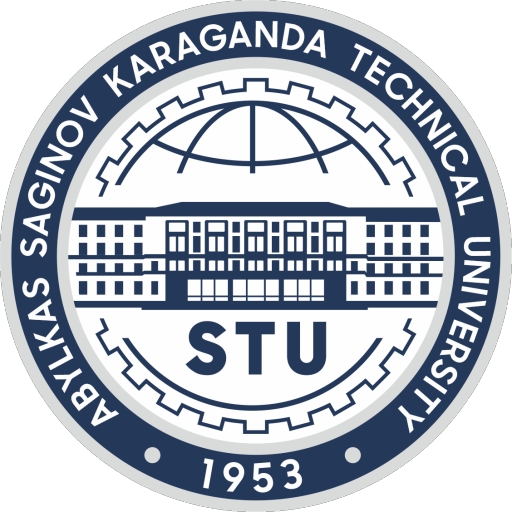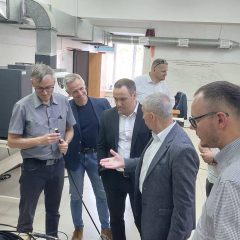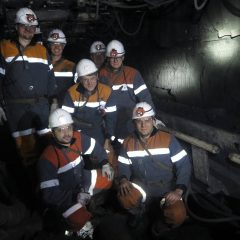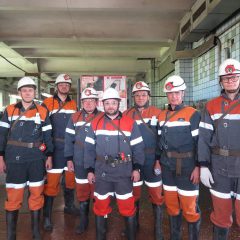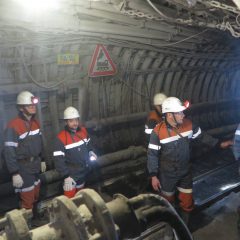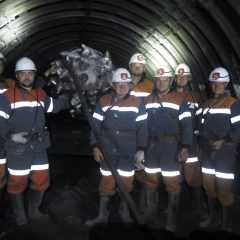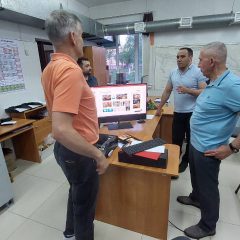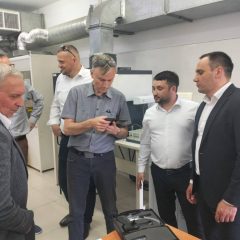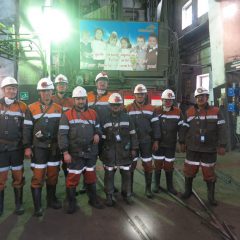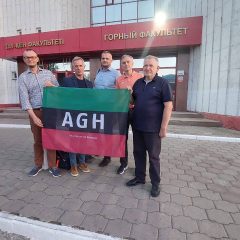On May 12–13, Abylkas Saginov Karaganda Technical University was visited by a delegation from the AGH University of Krakow (Poland), named after Stanisław Staszic—one of Europe’s leading technical universities specializing in mining, environmental engineering, mechanical engineering, and resource management.
The purpose of the visit was to develop international scientific and educational cooperation, discuss areas of joint research activities, and establish working contacts between the universities.
The AGH delegation included:
- Dr. hab. Eng. Radosław Pomykala, Professor (Faculty of Civil Engineering and Resource Management, Department of Environmental Engineering),
- PhD Eng. Paweł Bogacz, Professor (Faculty of Civil Engineering and Resource Management, Department of Industrial Economics and Management),
- DSc Eng. Piotr Małkowski, Professor (Faculty of Civil Engineering and Resource Management, Department of Geomechanics, Civil Engineering and Geotechnics),
- DSc Eng. Maciej Zajączkowski (Faculty of Civil Engineering and Resource Management, Department of Mining and Occupational Safety),
- PhD Eng. Jacek Cieślik, Professor (Faculty of Mechanical Engineering and Robotics, Department of Manufacturing Systems, Coordinator for Cooperation with Central Asian Countries).
The delegation was welcomed by Ali Mekhtiev, Member of the Management Board and Vice-Rector for Science and Innovation of Abylkas Saginov Karaganda Technical University, who emphasized the importance of international cooperation in training the next generation of engineers and advancing scientific research.
The main part of the visit took place at the Mining Faculty, where the AGH representatives visited the “Mineral Deposit Development” department and the Methane Energy Testing Laboratory. The guests were introduced to the laboratory capabilities, modern equipment, and examples of applied research implemented within projects funded by the Committee of Science of the Ministry of Science and Higher Education of the Republic of Kazakhstan.
Particular interest was shown in modern challenges in mine support technologies and geomechanics, as key areas in ensuring the stability of underground structures. Discussions included approaches to modeling the stress-strain state of rock masses and engineering solutions aimed at enhancing the stability of excavations in complex geological conditions, including the use of combined and adaptive support systems. Special attention was given to numerical modeling, geomechanical forecasting, development of effective support schemes, and the use of specialized software for analyzing rock stress conditions, assessing collapse risks, and optimizing design solutions.
The AGH delegation was also presented with scientific developments aimed at intensifying coal seam degasification, reducing methane emissions in mines, and the environmentally safe use of methane for energy purposes. The delegation noted the importance of this field in the context of both Kazakhstan’s and Europe’s coal industries.
Key areas of cooperation were identified during the meetings:
- Geomechanical research: developing methods to assess rock stress conditions, mine stability, and new types of mine supports;
- Technologies and engineering solutions for coalbed methane extraction and utilization;
- Experience exchange in laboratory testing, engineering modeling, and numerical analysis;
- Implementation of joint scientific and educational initiatives;
- Participation in international programs (Erasmus+, Horizon Europe, etc.);
- Academic mobility for students, master’s and doctoral candidates, and faculty members.
On the second day of the visit, the delegation visited the Kostenko mine of JSC “Qarmet,” accompanied by D. Akhatnurov, head of the Methane Energy Laboratory, and N. Zamaliev, associate professor of the Mineral Deposit Development Department. There, they learned about the organization of underground mining operations, ventilation systems, degasification, occupational safety practices, and technologies used in both development and production operations. The guests descended into the underground workings to a depth of more than 600 meters. The Polish specialists were able to familiarize themselves with coal mining processes, compare mining practices with those in Europe, and observe interesting engineering and technological solutions implemented in Kazakhstan.
The visit concluded with the identification of next steps for cooperation, including the development of specific research topics in geomechanics, mining engineering, and methane energy; preparation of joint applications for international and national grants; organization of scientific seminars; and expansion of academic mobility programs.
This visit marked an important step in strengthening international partnerships and confirmed the mutual interest of both parties in long-term and productive collaboration.
